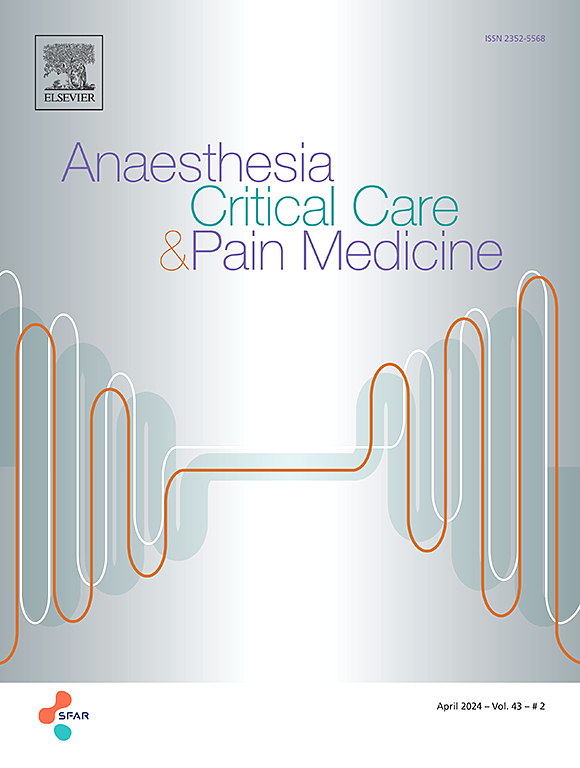急性脑损伤的自由输血vs限制性输血策略:随机临床试验的荟萃分析。
IF 4.7
3区 医学
Q1 ANESTHESIOLOGY
引用次数: 0
摘要
背景:急性脑损伤是一种严重的健康挑战,具有很高的死亡率和发病率。虽然贫血在这些患者中很常见,并可能使预后恶化,但最佳的红细胞输注策略仍然存在争议。目的:我们对随机对照试验(RCTs)进行了一项荟萃分析,比较了急性脑损伤患者的自由输血和限制性输血策略。方法:检索Pubmed、Embase和Cochrane图书馆数据库,检索截止2024年12月15日的RCT,比较急性脑损伤成人自由输血策略(血红蛋白阈值9-10 g/dL)和限制性输血策略(血红蛋白阈值7-8 g/dL)。主要结局是不利的神经预后。结果:纳入6项随机对照试验,共2599例患者。自由和限制策略在神经系统不良预后方面无显著差异(风险比[RR], 0.97;95%置信区间[CI], 0.83 ~ 1.14;p = 0.70)。同样,在总死亡率方面也没有观察到差异(RR, 0.98;95% CI, 0.85 ~ 1.12;p = 0.75),住院死亡率(RR, 1.02;95% CI, 0.79 ~ 1.31;p = 0.89)或重症监护病房(ICU)死亡率(RR, 0.74;95% CI, 0.28 ~ 1.91;p = 0.53)。尽管输血反应在自由输血组发生率无显著性增高(RR, 1.13;95% CI, 0.35 ~ 3.58;p = 0.84)。结论:在急性脑损伤患者中,与自由输血策略相比,限制性输血策略与更差的神经预后或更高的死亡率无关。临床实践意义:维持血红蛋白水平高于7-8 g/dL可能对急性脑损伤患者有效,可能减少不必要的输血和相关风险。meta分析注册:在PROSPERO注册,编号CRD42025639745)。本文章由计算机程序翻译,如有差异,请以英文原文为准。
Liberal vs. restrictive transfusion strategy for acute brain injury: A meta-analysis with trial sequential analysis of randomized clinical trials
Background
Acute brain injury is a critical health challenge with substantial mortality and morbidity. While anemia is common in these patients and may worsen outcomes, the optimal red blood cell transfusion strategy remains controversial.
Objective
We conducted a meta-analysis with trial sequential analysis of randomized controlled trials (RCTs) comparing liberal versus restrictive transfusion strategies in patients with acute brain injury.
Methods
Pubmed, Embase, and the Cochrane Library databases were searched through December 15, 2024, for RCT comparing liberal (hemoglobin threshold 9−10 g/dL) versus restrictive (hemoglobin threshold 7−8 g/dL) transfusion strategies in adults with acute brain injury. The primary outcome was an unfavorable neurological outcome.
Results
Six RCTs involving 2599 patients were included. There was no significant difference in unfavorable neurological outcomes between liberal and restrictive strategies (risk ratio [RR], 0.97; 95% confidence interval [CI], 0.83–1.14; p = 0.70). Similarly, no differences were observed in overall mortality (RR, 0.98; 95% CI, 0.85–1.12; p = 0.75), hospital mortality (RR, 1.02; 95% CI, 0.79–1.31; p = 0.89), or intensive care unit (ICU) mortality (RR, 0.74; 95% CI, 0.28–1.91; p = 0.53). Although transfusion reaction was non-significantly more frequent with liberal transfusion (RR, 1.13; 95% CI, 0.35–3.58; p = 0.84).
Conclusions
In patients with acute brain injury, a restrictive transfusion strategy was not associated with worse neurological outcomes or higher mortality compared to a liberal strategy.
Implications for clinical practice
Maintaining hemoglobin levels above 7–8 g/dL may be effective for patients with acute brain injury, potentially reducing unnecessary transfusions and associated risks.
Meta-analysis registration
registered on PROSPERO under number CRD42025639745.
求助全文
通过发布文献求助,成功后即可免费获取论文全文。
去求助
来源期刊

Anaesthesia Critical Care & Pain Medicine
ANESTHESIOLOGY-
CiteScore
6.70
自引率
5.50%
发文量
150
审稿时长
18 days
期刊介绍:
Anaesthesia, Critical Care & Pain Medicine (formerly Annales Françaises d''Anesthésie et de Réanimation) publishes in English the highest quality original material, both scientific and clinical, on all aspects of anaesthesia, critical care & pain medicine.
 求助内容:
求助内容: 应助结果提醒方式:
应助结果提醒方式:


